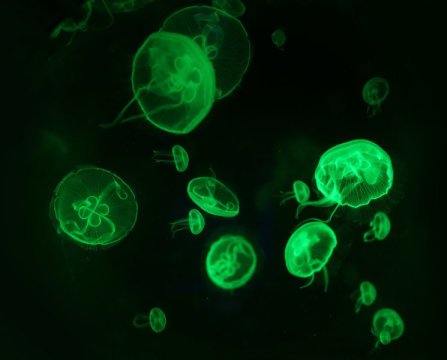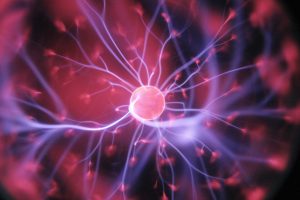Can Jesus Save the Catholic Church?
August 14, 2018 in Views

Photo by James Coleman on Unsplash
The Catholic community was once again rocked by scandal after a Grand Jury released a report of its probe into sexual abuse allegations against several Pennsylvania Dioceses. Originally convened by the PA Attorney General in 2016, the Jury’s 1,356-page report presents a comprehensive review of testimony and documentation going as far back as the 1940s. Ever since the Boston Globe brought the issue onto the international stage in a 2002 exposé that eventually earned The Globe a Pulitzer Prize, the Catholic Church has been increasingly mired in controversy as more and more allegations and details of systemic abuse emerged across the world.
In times like these, any organization infected with such a rampant disease would surely enter into a period of soul-searching, introspection, and the contemplation of a viable path forward. Though several figures have been removed from their positions and some have even faced litigation over the past 16 years, one fundamental problem that may have given rise to this behavior remains unaddressed. While the Church has moved from consistent denial – both internally and externally – to levying punishments against offenders, the root issue at the core of these scandals must be considered further if Catholics are ever to be confident in the priesthood again.
In the Beginning…
For much of the history of Christianity, the focus has been placed squarely on men as leaders of the church, and it has been accepted as fact that there were only 12 Apostles and that they were all male, though there are indications from bible passages like 1 Cor. 9:5 as well as documents from early church clerics indicating many of these men were married and that women once presided alongside the men during the early eucharistic rituals.
According to “A Brief History of Celibacy in the Catholic Church”, what follows next is roughly 2,000 years of sometimes conflicting ideas about marriage and celibacy, increasingly trending toward condemnation of women, marriage and sex for those in the priesthood. Further, Church officials hold that the exclusion of women not just from marriage to priests, but from positions of authority in the Church is expressly stated in the New Testament, and that women are not even allowed to question or challenge these teachings. In today’s Catholic Church, celibacy is the rule because as Fr. Jerome Bertram states in The Catholic Herald, “Celibacy, the choice of unmarried men for the priesthood, became normal, precisely because marriage is holy and a sacrament.”
Though those in the priesthood may claim to have chosen a life of celibacy in order to humbly serve the Church, thousands of accounts have now emerged from Ireland to Australia indicating it simply was not possible for them to maintain this particular vow.
The Endocrine Factor
Neuroscientists have been amassing a vast repository of data on the characteristics and effects of different hormones on both the physical body and our behavior. While there is still much to be discovered in the fields of Endocrinology and Neurochemistry, Oxytocin has been identified as an important neurotransmitter that controls behaviors such as social interaction, trust, empathy, favoritism, prejudice and even depression. The various activities of human contact ranging from platonic to sexual can affect our oxytocin levels and our ensuing behavior.
The absence of behaviors that stimulate this particular hormone can impact the levels of Cortisol or other hormones like Dopamine and Serotonin that can adversely affect the body and subsequent behavior and decision-making processes. Chronic lack of basic human contact can either lead to or reveal disorders like alexithymia or depression, and studies indicate that specific tactile deprivation during childhood can lead to impaired emotional and physical development and even excessive masturbation issues.
Putting the “Hu” back in Man
While those in the church may argue that a personal relationship with God somehow supersedes neurochemistry, thousands of lawsuits, formal inquiries, and internal Church documents from across the globe suggest otherwise. The true consequence of removing the priesthood from the natural conditions of humanity is now coming to light.
By denying thousands of men worldwide the right or approval to participate in familial relationships and putting those same men in charge of the spiritual leadership of the masses, countless people’s lives have been irrevocably damaged. While each and every sex abuser is responsible for his actions, when an organization is revealed to have such a systemic pattern of sexual abuse in its ranks, one must question the organization that gave rise to such a culture in the first place.
Ideally, religion can provide its followers with tools to transcend the physical experience of reality and come closer to God. Yet, those who follow the Bible can read that the human form was created in God’s image. That includes our neurochemistry, possession of reproductive organs, and all of the physical mechanics that govern our empathy, sense of connection to others, and emotional wellbeing. To decree that the human experience must be completely invalidated and renounced in order to come closer to God seems to have bred a deep-rooted sickness in the heart of one of the largest religions in the world, and to maintain this decree with the expectation that the fear of punishment will heal this sickness seems to be folly.
Putting the “Wo” back in Man
Though scorned by mainstream ecumenical scholars and clergy, texts not accepted into the biblical canon give us the idea that early Christianity might have been much different than modern iterations of the Church, and may have exhibited a higher degree of gender parity. There are over 7.6 billion people in the world today; roughly half of those people are women. Yet, in Islam, Judaism and Christianity, which combined represent half of the entire population as well, women are excluded from the clergy and upper echelons of power.
In one of the most compelling and articulate arguments for the inclusion of women in religious organizations, Jimmy Carter noted in a 2009 speech to the Australian Parliament, “It is ironic that women are now welcomed into all major professions and other positions of authority, but are branded as inferior and deprived of the equal right to serve God in positions of religious leadership.” He continued, “The truth is that male religious leaders have had – and still have – an option to interpret holy teachings either to exalt or subjugate women. They have, for their own selfish ends, overwhelmingly chosen the latter.”
It is quite possible that in doing so, the men of the Catholic clergy have also indelibly harmed themselves: their credibility, their sanity, and their holy stature, all because they subjugated and marginalized the role of women and familial relationships in service to God and community.
With all that has transpired, can Jesus save the Catholic Church? Perhaps this time, it will take both Jesus and Mary together to get the job done.
References
http://media-downloads.pacourts.us/InterimRedactedReportandResponses.pdf?cb=22148
https://www.catholic.org/pope/pope_slide.php
https://www.catholic.com/tract/immaculate-conception-and-assumption
https://www.futurechurch.org/brief-history-of-celibacy-in-catholic-church
https://www.catholic.com/tract/women-and-the-priesthood
http://www.catholicherald.co.uk/issues/august-19th-2016/the-true-history-of-celibacy/
https://www.psychologytoday.com/us/basics/oxytocin
https://www.nytimes.com/2017/12/05/well/family/gender-men-touch.html
https://www.nature.com/news/neuroscience-the-hard-science-of-oxytocin-1.17813
https://blogs.scientificamerican.com/mind-guest-blog/the-emotional-blindness-of-alexithymia/
https://www.ncbi.nlm.nih.gov/pubmed/704195
http://www.earlychristianwritings.com/gospelmary.html
https://www.cartercenter.org/news/editorials_speeches/parliament-world-religions-120309.html
https://www.nytimes.com/2010/01/10/opinion/10kristof.html
Exclusion of Women: https://www.jstor.org/stable/2578076?seq=1#page_scan_tab_contents

Quantum Entanglement May Make Distance Healing Possible
August 3, 2018 in Views

Credit: © Glebstock / Fotolia via https://www.sciencedaily.com/releases/2017/12/171205130106.htm
Researchers at Northwestern University have designed an experiment to demonstrate and measure quantum effects on biological systems. As the body of work grows on the actual mechanics of quantum physics (beyond theory), more and more research is being done to understand how the quantum field interacts with living systems: read more about the NWU research project here. With these and many other projects currently underway, our understanding of the interconnected nature of reality continues to deepen.
What is Quantum Entanglement?
The most basic explanation of Quantum Entanglement is a group of subatomic particles whose behavior is shared amongst the group. Once these particles are separated in space-time, no matter how far away the particles are taken from each other, if the property of one is changed, the other entangled particles’ properties will also immediately change to match. Einstein at first called this phenomenon “Spooky Action at a Distance”, and for a long time after his theoretical discovery in 1935, scientists ran into difficulty proving or disproving the theory in the lab. Over the last 15 years, researchers from all over the world have developed a high enough level of technological sophistication to craft laboratory experiments to explore Quantum Entanglement further, and the results grow ever more astonishing.
What does Quantum Entanglement have to do with us?
Look down at your body. Where did it come from? The average human body is made of over three trillion cells; not a single one of them came from “you”. The first two – the egg and the sperm – were provided by your parents, then as the miracle of cell mitosis began, the energy needed to sustain fetal growth came from the food, warmth, and life force provided by your mother while you continued to grow in the womb.

Photo by Hal Gatewood on Unsplash
Once you were born, your growth continued, but this condition would not have been possible without the constant input of fluids, food, and sunlight. Baby formula, mushed peas, cereal, juice; all contained molecules that were broken down into atoms and integrated with your digestive system, with some atoms being taken into your body to fuel continued growth, and some atoms being expelled back out into the world. The atoms in the peas came from a plant growing in soil potentially thousands of kilometers away from you.
Every breath you have breathed since birth contained spores, particulate, space dust, and molecules from potentially thousands of kilometers away that were taken into your lungs and either integrated into your pulmonary system or expelled back out into the world. Sunlight that was created 150 million kilometers away was absorbed into your skin to aid the production of things like Vitamin D and Melanin.
Even without taking Quantum Entanglement into consideration, you can easily see how deeply connected your body is to the physical world and everything in it, and how in a sense, “your” body as you know it came from a million different sources other than “you”. Layering in the concept of Quantum Entanglement, we can begin to see how deeply connected we are to the very energy flowing through the universe itself. Quantum Entanglement can happen at the moment a group of atoms is created, or, as some research shows, it can be induced – or imposed on atoms that already exist.
What does Quantum Entanglement have to do with Distance Healing or Prayer?

Photo by Roan Lavery on Unsplash
One of the many exciting prospects that Quantum Entanglement makes possible is the ability to transfer data instantaneously. We already have the basic framework buried deep within our computer systems: binary code. Substituting the spin direction of entangled atoms for the 0/1 state of binary code, we can instantaneously transfer a bit of data from one entangled atom to the other (or others), no matter how far apart they are.
The chasm between Science and Spirituality has been narrowing (for non-atheists) at a furious pace over the last 20 years. It is Quantum Physics that brings us closer to an understanding of the true mechanics behind platitudes like “You Create Your Own Reality” or “You Reap What You Sow”, or phenomena like the Maharishi Effect or Lynn McTaggart’s Intention Experiments. In the case of distance healing or prayer, a person directs a specific intention toward another person who may be in close physical proximity or thousands of kilometers away. In a sense, the intention for healing is simply information, and as we have seen with Quantum Entanglement, information can be transmitted instantaneously, and entanglement can be induced or created.
In their paper, “The Unified Spacememory Network: from Cosmogenesis to Consciousness”, researchers Nassim Haramein, William David Brown, Amira Val Baker discuss theories on the actual quantum mechanics of the rise of consciousness and the connection between mass and energy in the universe. They suggest that the very nature of the universe itself may be a series of interconnected “Planck-scale micro-wormhole entanglement structure of multiple spacetime coordinates [which] engender the macromolecular assemblies of living cells”. Haramein’s Resonance Science Foundation is just one of several research institutes not only seeking to uncover the secrets of the Quantum Universe, but of consciousness itself, and the nature of our interconnected condition.
Some in the scientific community may denounce the efficacy of prayer, transcendental meditation, and shamanistic healing rites as parlor tricks meant to soothe the fears of gullible people desperate for relief, but science is rapidly closing in on a dataset that may have a profound impact on our civilization in years to come. As we hone in on true reality from both a scientific and a religious perspective, at least one thing becomes evident; everything we create in life comes first from either a conscious or subconscious intention.
Whether we intend to cut someone off on the highway or share breakfast with a homeless man on the street, whether we create a work of art or dinner for four, a foul mood or a smile, it is our intention to do something for, or to, others which puts our hearts and our physical bodies into motion. Understanding that both our intention and our actions move out into a world reverberating with consequences and reaction is an important step in mastering our path toward greater awareness of our interconnected nature.
References:
- Northwestern University. “Experiment demonstrates quantum mechanical effects from biological system.” ScienceDaily. ScienceDaily, 5 December 2017. sciencedaily.com/releases/2017/12/171205130106.htm
- https://www.quantamagazine.org/entanglement-made-simple-20160428/
- https://www.sciencenews.org/article/spooky-quantum-entanglement-goes-big-new-experiments
- https://www.mum.edu/tm-research-overview/maharishi-effect/
- https://lynnemctaggart.com/the-intention-experiment/
- https://resonance.is/wp-content/uploads/USMN.pdf
